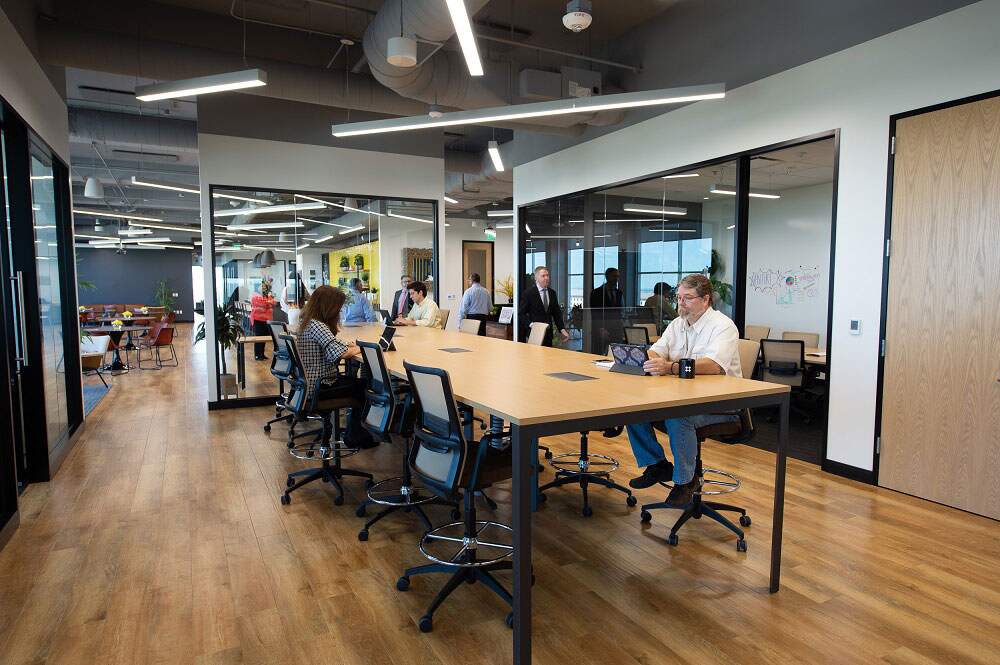Since the first coworking space opened in 2015, shared workspaces have exponentially grown in popularity and drastically shifted the way we work. Now, an ever-increasing number of professionals and businesses are getting their work done at coworking spaces instead of traditional offices.
As demand for flexible work options increase, JLL predicts 30 percent of the office market will be made of coworking spaces by 2030.
So, what’s driving the coworking evolution? Coworking spaces offer several benefits to businesses when compared to traditional offices. Here are a few:
Improved Networking
While traditional offices have limited opportunities for networking, collaboration and community, coworking spaces are designed to foster connections. In addition, the minimal networking opportunities at traditional offices are limited to those within the company. At coworking spaces, workers have the chance to share ideas with other like-minded professionals from a wide range of job roles and industry verticals.
Both employers and workers benefit from the creativity inspired by the collaborative environment of shared workspaces. Those who work in shared workspaces also report gaining work and business referrals by networking at the site.

Reduced Costs
It should come as no surprise that companies’ bottom lines are a key factor driving demand for coworking space. And, the bottom line is this: coworking offers a 12-72 percent cost reduction compared to traditional office space, based on locations around the world.
The costs for traditional office space quickly add up. In addition to lease payments, costs for traditional office space include utilities, internet and tech support, and maintenance.
On the flip side, utilities, internet and tech support, and maintenance are all typically included in coworking memberships. Businesses of all sizes have caught on to the cost savings of shared workspace.
Increased Productivity
Companies and employees alike have reported improved productivity at coworking spaces. The stuffy, corporate environments and limited opportunities for collaboration at traditional offices stifle creativity and productivity.

At shared workspaces, 74 percent of coworkers report feeling more productive. With flexible work options and an engaging, inspiring place to work, employees are happier and therefore more productive and effective. This allows workers to feel more fulfilled with their jobs, and companies to benefit from higher quality work.
These factors – and more – have led to the rapid expansion of the coworking industry, and it shows no signs of slowing down.